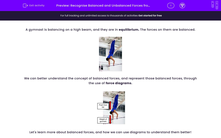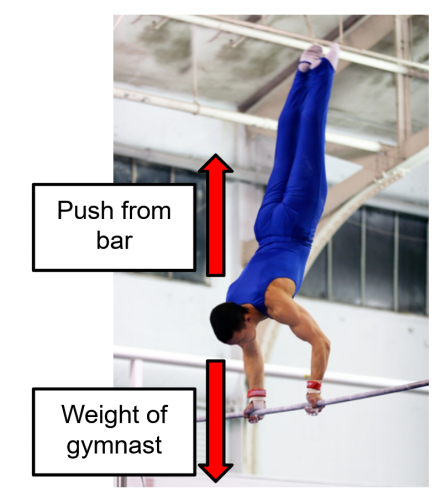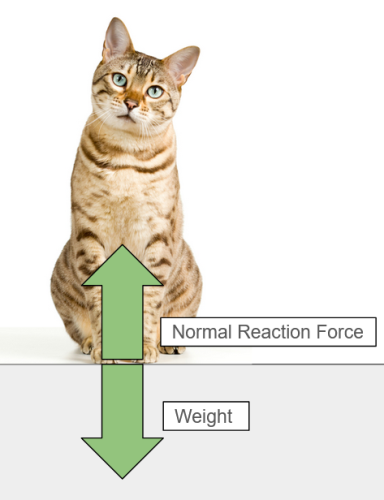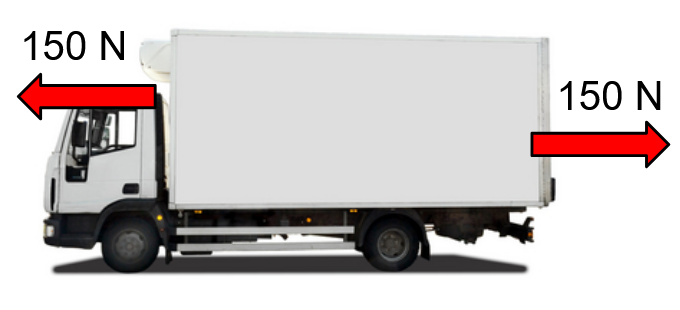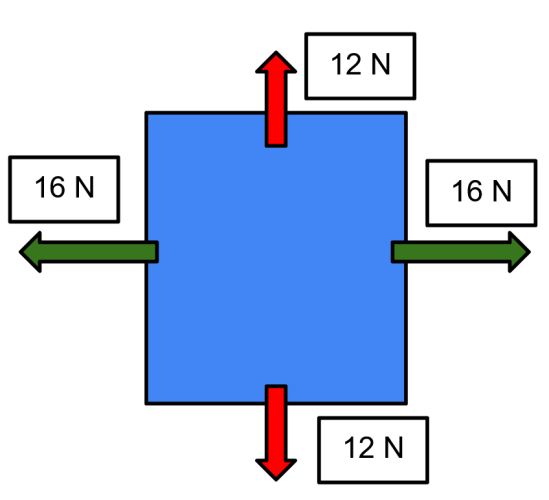A gymnast is balancing on a high beam, and they are in equilibrium. The forces on them are balanced.

We can better understand the concept of balanced forces, and represent those balanced forces, through the use of force diagrams.
Let's learn more about balanced forces, and how we can use diagrams to understand them better!
We will start by considering our example of the gymnast. Two forces are acting on them - the weight of the gymnast, and the push from the bar.
Those two forces are balanced because they are acting in opposite directions and have the same size. The gymnast is in equilibrium.
How does the diagram help us understand those ideas?
Force diagrams always have a label for each force, helping us to understand more about the situation. The label could have the name of the force or the size of the force (in Newtons).
In force diagrams, the length of the arrow indicates the size of the force. That can help us spot situations where the object is in equilibrium.
In our diagram of the gymnast, we can see the names of the forces, and we can also see that the arrows have the same length. This helps us to understand the forces on the gymnast, and that he must be in equilibrium.
How do balanced forces affect objects?
If the forces on an object are balanced, then the motion of the object will not change.
If the object is stationary (not moving), then it will continue to be stationary.
Here is an example: a cat is sitting on a table.
The diagram shows us that two forces are acting on the cat - the normal reaction force and the weight. The diagram also shows us that the forces are the same size.
The forces on the cat are balanced. Therefore, the motion of the cat will not change. It will remain stationary.
If the object is already moving, then it will continue to move at a constant speed.
Here is an example of that situation. A truck is travelling along a road, at a constant speed.
The diagram shows two forces acting on the truck - both have a size of 150 Newtons. The forces on the truck are balanced.
When the forces are balanced, the motion of the truck will remain the same - it will not accelerate (speed up) or decelerate (slow down). It will continue to move at a constant speed.
Here is a final example. Is this box in equilibrium?
To figure this out, we look at the horizontal and vertical forces separately.
Horizontally, the forces are the same size and would cancel out.
Vertically, the forces are the same size and would cancel out.
Yes, the box is in equilibrium.
Let's try some questions!

